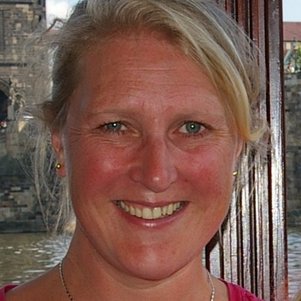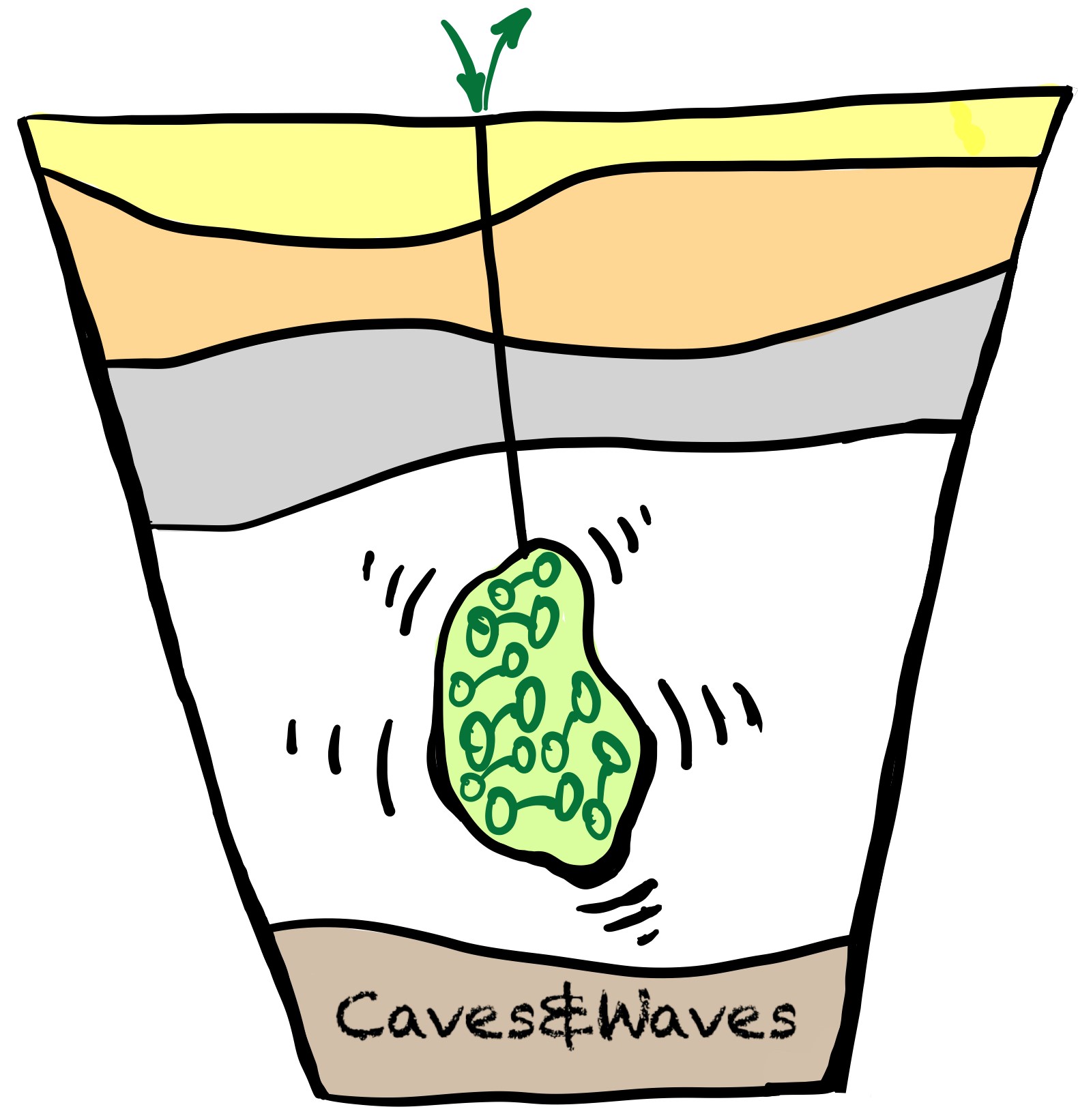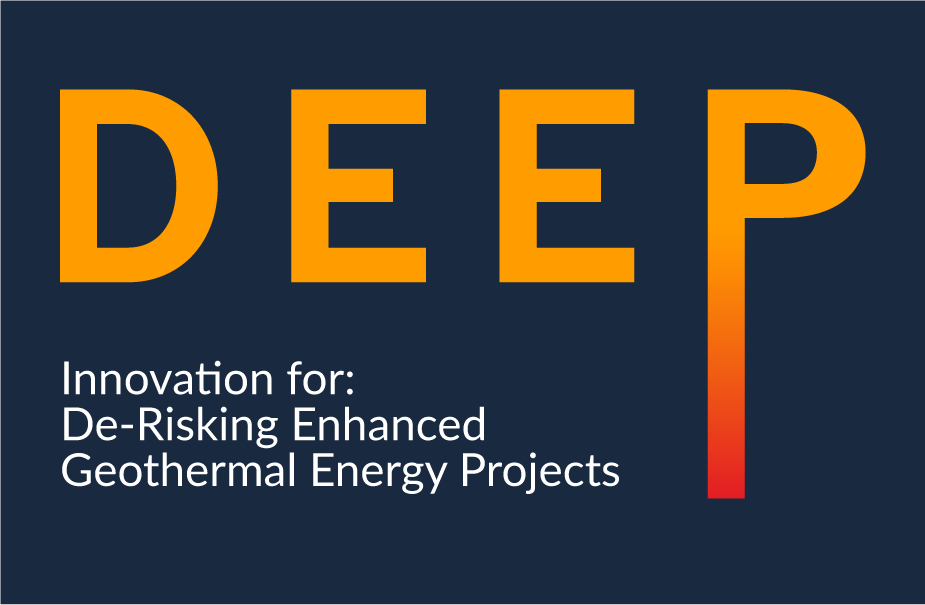Muntendam-Bos, A.G.
Profile
Annemarie Muntendam-Bos studied Geophysics, major Seismology, at Utrecht University. For two years she worked in the offshore oil- and gas industry before returning to Utrecht University. She obtained her PhD “Interseismic and coseismic surface deformation deduced from space geodetic data with inferences of seismic hazard, tectonic processes, earthquake complexity and slip distribution“ in 2003. Annemarie continued her academic career as a postdoc at SRON before joining TNO where she specialized in geomechanical research on induced seismicity. In May 2012, Annemarie joined the Dutch safety authority for mining operations (SodM), where she works as an expert on induced seismicity and has worked extensively on the Groningen induced seismicity problem. Annemarie was appointed part-time associate professor on induced seismicity at the TU Delft in 2018.
Research
My research interests can be broadly defined as the study of earthquakes induced by GeoEnergy applications and the physics of the earthquake source. A major objective of my work is to improve our knowledge of human induced earthquake hazards through the application of physics-based understanding of the underlying processes. I have also long been committed to earthquake risk reduction and risk governance, specifically through the transfer of scientific understanding of the hazard and ways to influence the hazards, to people, operators, and policymakers.
Main research projects:
- DEEP Innovation for: De-Risking Enhanced Geothermal Energy Projects. Funded through the cofund GEOTHERMICA together with the EC and various National Funding Agencies. 2020-2023.
- Minimizing the risk of induced seismicity associated with geothermal energy in fractured reservoirs. Funded by NWO-TTW Open Technology Program. 2022-2026.
- Caves&Waves: Quantification of the probability of induced seismicity associated with large-scale hydrogen storage in Dutch salt formations. Funded by SodM. 2022-2026.
- Effects of Subsurface Engineering (AES1415)
- Guest lecturer in various BSc and MSc courses
-
Muntendam-Bos, A.G., Hoedeman, G., Polychronoloulo, K., Dragonov, D., Weemstra, C. Van der Zee, W., Bakker, R., and Roest, J.P.A., An overview of Induced Seismicity in the Netherlands, Netherlands Journal of Geosciences, Volume 101, e1. doi.org/10.1017/njg.2021.14, 2022
Candela, T, Pluymaekers, M., Ampuero, J-P., Wees, J-D van, Buijze, B., Wassing, B., Osinga, S., Grobbe, N., Muntendam-Bos, A.G, Controls on the spatio-temporal patterns of induced seismicity in Groningen constrained by physics-based modeling with Ensemble-Smoother data assimilation. Geophysical Journal International, ggab497, doi.org/10.1093/gji/ggab497, 2021
Muntendam-Bos, A.G., Clustering characteristics of gas-extraction induced seismicity in the Groningen gas field, Geophysical Journal International 221, 879-892, doi: 10.1093/gji/ggaa038, 2020.
Baisch, S., Koch, C. and A.G. Muntendam-Bos, Traffic Light Systems – How much control on induced seismicity?, Seismological Research Letters 90, 1145-1154. doi:10.1785/0220180337, 2019.
Muntendam-Bos, A.G., J.P.A Roest and J.A. de Waal, The effect of imposed production measures on gas extraction induced seismic risk, Netherlands Journal of Geosciences 96-5, s271-s278, doi:10.1017/njg.2017.29 , 2017.
Subpage (if applicable):
[34] Muntendam-Bos, A.G., Hoedeman, G., Polychronoloulo, K., Dragonov, D., Weemstra, C. Van der Zee, W., Bakker, R., and Roest, J.P.A., An overview of Induced Seismicity in the Netherlands, Netherlands Journal of Geosciences, Volume 101, e1. doi.org/10.1017/njg.2021.14, 2022
[33] Candela, T, Pluymaekers, M., Ampuero, J-P., Wees, J-D van, Buijze, B., Wassing, B., Osinga, S., Grobbe, N., Muntendam-Bos, A.G, Controls on the spatio-temporal patterns of induced seismicity in Groningen constrained by physics-based modeling with Ensemble-Smoother data assimilation. Geophysical Journal International, ggab497, doi.org/10.1093/gji/ggab497, 2021
[32] Muntendam-Bos, A.G., Geomechanical characteristics of gas depletion induced seismicity in The Netherlands, 55th US Rock Mechanics/geomechanics symposium (ARMA), ARMA 21–1038, Houston, 20-23 June 2021.
[31] Jharap, G., Leeuwen, L. van, Mout, R., Zee, W. van der, Roos, F., and A.G. Muntendam-Bos, Ensuring safe growth of the geothermal energy sector by proactively addressing risks and hazards, Netherlands Journal of Geosciences 99, e6, doi.org/10.1017/njg.2020.3, 2020.
[30] Muntendam-Bos, A.G., Clustering characteristics of gas-extraction induced seismicity in the Groningen gas field, Geophysical Journal International 221, 879-892, doi: 10.1093/gji/ggaa038, 2020.
[29] Candela, T, Osinga, S., Ampuero, J-P., Wassing, B., Pluymaekers, M., Fokker, P.A., Wees, J-D van, Waal, J.A. de, Muntendam-Bos, A.G., Depletion-induced seismicity at the Groningen gas field: Coulomb rate-and-state models including differential compaction effect, Journal Geophysical Research - Solid Earth 124, 7081–7104, DOI: 10.1029/2018JB016670, 2019.
[28] Baisch, S., Koch, C. and A.G. Muntendam-Bos, Traffic Light Systems – How much control on induced seismicity?, Seismological Research Letters 90, 1145-1154. doi:10.1785/0220180337, 2019.
[27] Thienen-Visser, K. van, J.A. Roholl, and B.M.M. van Kempen, A.G. Muntendam-Bos, Categorizing the level of seismic risk for the onshore gas fields in the Netherlands, Engineering Geology 237, 198-207, doi: 10.1016/j.enggeo.2018.02.004, 2018.
[26] Muntendam-Bos, A.G., J.P.A Roest and J.A. de Waal, The effect of imposed production measures on gas extraction induced seismic risk, Netherlands Journal of Geosciences 96-5, s271-s278, doi:10.1017/njg.2017.29 , 2017.
[25] Waal, J.A., A.G. Muntendam-Bos and J.P.A. Roest, From checking deterministic predictions to probabilities, scenarios and control-loops for regulatory supervision, Netherlands Journal of Geosciences 96-5,s17-s25, doi:10.1017/njg.2017.15, 2017.
[24] Waal, J.A. de, A.G. Muntendam-Bos, and K. van Thienen-Visser, Lessons from larger than expected subsidence due to production of halite and natural gas in Fryslân, 50th US Rock Mechanics/geomechanics symposium (ARMA), ARMA 16-434, Houston, 26-29 June 2016.
[23] Waal, J.A. de, A.G. Muntendam-Bos, and J.P.A. Roest, Production Induced Subsidence and Seismicity in the Groningen Gas Field. Can it be managed?, PHIASH-2015-421 Special Issue: Prevention and mitigation of natural and anthropogenic hazards due to land subsidence, Proc. IAHS, 372, 129–139, 2015.
[22] Muntendam-Bos, A.G., J.P.A. Roest, and J.A. De Waal, A guideline for assessing seismic risk induced by gas extraction in the Netherlands, The Leading Edge 34(6), 672-677, doi:10.1190/tle34060672.1, 2015.
[21] Thienen-Visser, K. van, A.G. Muntendam-Bos, and J.N. Breunese, Subsidence due to gas production in the Wadden Sea: How to ensure no harm will be done to nature, 49th US Rock Mechanics/geomechanics symposium (ARMA), ARMA 15-098, San Fransisco, 28 June-1 July 2015.
[20] Muntendam-Bos, A.G., J.P.A. Roest, and J.A. De Waal, Managing Subsidence due to Salt Mining, Proceedings of the Solution Mining Research Institute Fall 2014 Technical Conference, Groningen, September 2014.
[19] Muntendam-Bos, A.G. and J.A. De Waal, Reassessment of the probability of higher magnitude earthquakes in the Groningen gas field, SodM Technical report, January 2013.
[18] Waal, J.A. de, J.P.A Roest, P.A. Fokker, I.C. Kroon, J.N. Breunese, A.G. Muntendam-Bos, A.P. Oost and G. Van Wirdum, The effective subsidence capacity concept: How to assure the subsidence in the Wadden Sea remains within defined limits, Netherlands Journal of Geosciences 91(3), 385-399, 2012.
[17] Fokker, P.A., K. Visser, L. Peters, G. Kunakbayeva, A.G. Muntendam-Bos, Inversion of surface subsidence data to quantify reservoir compartmentalization: A field study, Journal of Petroleum Science and Engineering 96-97, doi:10.2118/134457-MS, 2012
[16] Visser, K., A.G. Muntendam-Bos, G. Kunakbayeva, O. Leeuwenburgh, E. Peters, and P.A. Fokker, Inverting subsidence data to detect possible compartmentalization in a gas reservoir in the Netherlands, Proceedings of the eighth international symposium on land subsidence, Querétaro, México, 17-22 October, 2010.
[15] Fokker, P.A., Visser, K., E. Peters, G. Kunakbayeva, and A.G. Muntendam-Bos, Inversion of subsidence data to quantify reservoir compartmentalization: a field study, SPE annual technical conference and Exhibition, 3, pp. 2556-2565, Florence, Italy, 20-22 September, 2010.
[14] Wassing, B.B.T., Waarts, P.H., Roos, W., Nepveu, M., Muntendam-Bos, A.G., Van Eck, T., Seismic risk analysis of small earthquakes induced by hydrocarbon production in the Netherlands, SPE – 72nd European Association of Geoscientists and Engineers Conference and Exhibition 2010 – Incorporating SPE EUROPEC 2010, 5, pp. 3788-3793, Barcelona, Spain, 14-17 June, 2010.
[13] Muntendam-Bos, A.G., M.H.P. Kleuskens, M. Bakr, G. de Lange, and P.A. Fokker, Unravelling shallow causes of subsidence, Geoph. Res. Lett. 36, L10403, doi: 10.1029/2009GL037190, 2009.
[12] Samieie-Esfahany, S., R.F. Hanssen, K. van Thienen-Visser, A.G. Muntendam-Bos, On the effect of horizontal deformation on InSAR subsidence estimates, Proc. of Fringe 2009, Frascati, Italy, 30 Nov.-4 Dec., 2009.
[11] Muntendam-Bos, A.G. and P.A. Fokker, Unravelling reservoir compaction parameters through the inversion of surface subsidence observations, Comp. Geosc 13(1), doi: 10.1007/s10596-008-9104-z, 2009.
[10] Fokker, P.A., Gunnink, J., Kroon, I.C., De Lange, G., Muntendam-Bos, A.G., Nepveu, M., Subsidence in the Netherlands – Measuring, matching, monitoring, modelling, SPE – 71st European Association of Geoscientists and Engineers Conference and Exhibition, 2, pp. 1151-1155, Amsterdam, Netherlands, 8-11 June, 2009.
[9] Kroon, I.C., B-L. Nguyen, P.A. Fokker, A.G. Muntendam-Bos, and G. de Lange, Disentangling shallow and deep processes causing surface movement, Math. Geosc. 41(5), doi: 10.1007/s11004-008-9197-x, 2009.
[8] Muntendam-Bos, A.G., I.C. Kroon and P.A. Fokker, Time dependent inversion of surface subsidence due to dynamic reservoir compaction, Mathematical Geology, doi: 10.1007/s11004-007-9135-3, 2008.
[7] Fokker, P.A., Muntendam-Bos, A.G., and I.C. Kroon, Inverse modelling of surface subsidence to better understand the Earth's subsurface., First Break volume 25, 101-105, August 2007.
[6] Bos, A.G. and Spakman, W., The surface deformation of the Western United States Deformation Zone inferred from 497 motion vectors, J. Geophys. Res. 110(B8), B08405, doi:10.1029/2003JB002742, 2005.
[5] Bos, A.G., Usai, S. and Spakman, W., A joint analysis of GPS motions and InSAR to infer the coseismic surface deformation of the Izmit, Turkey Earthquake, Geophys. J. Int. 158, 849-863, doi:10.1111/j.1365-246X.2004.02359.x, 2004.
[4] Bos, A.G., Interseismic and coseismic surface deformation deduced from space geodetic data with inferences of seismic hazard, tectonic processes, earthquake complexity and slip distribution, Ph.D. Thesis, Geologica Ultraiectina 233, Utrecht University, Utrecht, 2003.
[3] Bos, A.G. and Spakman W., The resolving power of coseismic surface displacement data for fault slip distribution at depth, Geophys. Res. Lett., 30(21), 2110, doi:10.1029/2003GL017946, 2003.
[2] Bos, A.G., Spakman, W. and Nyst, M.C.J., Surface deformation and tectonic setting of Taiwan inferred from 143 GPS motion vectors, J. Geophys. Res., 108(B10), 2458, doi:10.1028/2002JB002336, 2003.
[1] Bos, A.G., Nolet, G., Rubin, A., Houston, H., Vidale, J.E., Duration of deep earthquakes determined by stacking of Global Seismograph Network seismograms., J. Geophys. Res. 103, 21,059-21,065, 1998.
DEEP Innovation for: De-Risking Enhanced Geothermal Energy Projects
Induced seismicity poses a tremendous challenge to future deep geothermal energy exploitation. The large international and multidisciplinary EC GEOTHERMICA DEEP project combines innovation in sensors and data analysis with demonstration and knowledge transfer activities into one coherent work program that will have a profound impact on de-risking future EGS projects. Balancing risk and economic output is a key requirement and DEEP has a strong focus on optimization of monitoring and risk assessment procedures in order to reduce commercial costs to future projects. The project will be conducted in close collaboration with industry partners and in partnership with the US Department of Energy geothermal test site FORGE in Utah.
Minimizing the risk of induced seismicity associated with geothermal energy in fractured reservoirs
This TU Delft-led project is supported by a user committee with commercial and non-commercial partners from the Netherlands, Germany and Belgium. The proposed increase in geothermal energy demands a significant increase in wells, which makes the use of deep fractured and fault systems unavoidable. Induced earthquakes are among the biggest problems for subsurface operations, where especially in fractured reservoirs the risk is considered significant with the current state of knowledge. We want to gain insight into the complex interactions between processes inducing stress changes on faults above, in, and below a fractured carbonate reservoir and the subsequent reactivation of these faults. Through an experimental and numerical investigation, we will create constitutive models which will improve the currently limited understanding of the occurrence, location and magnitude of induced seismicity which occurred in pilot sites. We will combine our recommendations in a proposal for a “Guideline for operation of deep fractured reservoirs”.
Caves&Waves: Quantification of the probability of induced seismicity associated with large-scale hydrogen storage in Dutch salt formations
Caves&Waves is a project in the context of the challenges posed by subsurface storage as part of the energy transition. Induced earthquakes are among the biggest problems for subsurface operations. Small magnitude events have been reported regularly for the current leaching and storage operations. The aim of Caves&Waves is to understand, analyse and quantify the mechanism behind these small events and assess the probability for induced seismicity associated with future large scale storage activities.
Efficient and robust open-source modelling platform for Energy Transition applications
Development of a high-performance numerical framework capable of executing uncertainty quantification, risk analysis and energy production optimization, based on DARTS.
- Senior Specialist on induced seismicity, Dutch State Supervision of Mines (SodM)
- Member Advisory Board Netherlands Journal of Geosciences.
- Member of the American Geophysical Union (AGU).
- Guest editor special issue on “Induced seismicity - a global phenomenon with special relevance to the Dutch subsurface".

Annemarie Muntendam-Bos
Associate Professor of Induced Seismicity (part time)
- a.g.muntendam-bos@tudelft.nl
-
Faculty of Civil Engineering and Geosciences
Building 23
Stevinweg 1
2628 CN Delft / 2600 GA DelftRoom number: 3.07
Availability: Wednesday & 1st Thursday of the month


